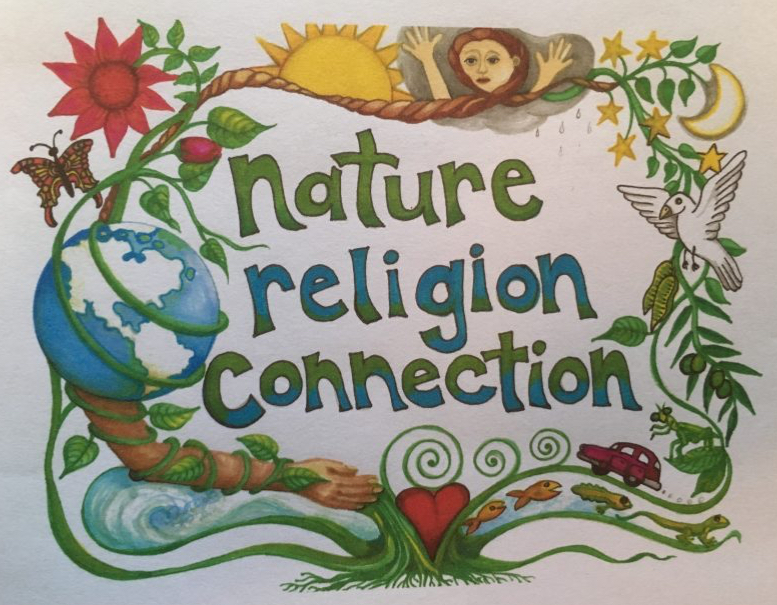
Fate and Destiny, I never used to believe in that. Now I’m changing my mind.
In a way, that is not true. Personally, I must admit I grew up and eventually developed a haunting feeling that I was to fail in life, so to speak. Fairly obvious to me, that theme rose from the relationship of my mother to my father, and I was the eldest son. Accusations were made, and screamed, concerning their expectations for each other. I picked up on that consciously and subtly: eventually as an adult I sought counselling. I felt I was fated.
The idea of fate and destiny don’t seem as prevalent or as demanding as they use to be; you might agree. Today we seem to side more with Becca on the internet, “Creating your own destiny is not an easy task, but it is possible if you have the right ingredients! With a clear plan, well-defined goals, and a positive attitude, you can achieve anything you set your mind to” (from basicsbybecca.com). It’s the old ‘can-do’ attitude! Well, Becca, it may be a little more complicated than that.

The very words themselves—their origins and history—tell some of the story.
“Fate” comes from the Latin fatum which means ‘that which has been said’ according to the Oxford English Dictionary. Its current meaning is “the power or agency, which according to popular belief, predetermines all events from eternity.” Wow, from Eternity!—that is serious stuff.
“Destiny” is related to the modern term, “destination.” It’s the place were you are going. But its Latin origins give it a more complex connotation. Destinare means “to establish or make firm,” as when someone is given (declared to have) an office or job. It is like one’s purpose or “end” as in a goal to be fulfilled.
So the common theme is Fate and Destiny are a guiding force, a determinative power, that is at work on persons and things but is also accompanied by a declaration or a pronouncement , some precursor.
Some Famous Examples of Fate and Destiny
In American history, starting in the early 1800s and lasting about 100 years, a tremendous population growth occurred in the United States. To accommodate this surge brought on by both a high birth rate and massive immigration (and several economic depressions in the established eastern states) this country expanded its territory. Growing westward, but also south into Florida and Texas, and north into Oregon, it was like a wave of water—the population pushed outward. That was fate and destiny as a natural force; people wanted new land and new opportunity.
In 1845, a newspaper man and political advisor named John O’Sullivan wrote an editorial proclaiming that it was this country’s “Manifest Destiny” to expand through out the North American contingent. The phrase became popular; it was a political policy and a national project for many Americans. They believed that it was a reality plain to see (manifest) and fated to occur.

But Fate and Destiny go back much farther than American history. In the mythology of Ancient Greece, “fate” is envisioned as the product of three mysterious women. They resided in no specific location, nor were they thought of as gods, but no god could overrule their effect on humans. They were the source of our destinies.

“The Fates” were Clotho, “who spun the thread of life.” Obviously related to our word “cloth,” that web of thread so vital and near to us; she created that string of events that form each life or that network of ‘threads’ in which each life occurs. From the Greek word, Klotho, which means “one who spins thread.”
Lachesis (pronounced with a short a sound in the dominant first syllable, la-kuh-sis) was “the Disposer of Lots who assigned to each human their destiny.” She is sometimes referred to as the goddess of luck, Tykhe or Thche, and is possibly the source of our word “luck” as a shortening of the Germanic/Dutch gheluc. Hesiod, one of our first recorded poets (along with Homer, circa 750 BCE), wrote that Lachesis “gave to men at birth evil and good to have.”
Finally, there was Atropos, “she who could not be turned.” Pronounced uh-traa-powz, she wielded what Hesiod called, “the abhorred shears” with which she cut the thread of life; she was the bringer of death. She is portrayed as unflinching and relentless. (All the above quotes are from Edith Hamilton’s Mythology, possibly the greatest book I read in high school.)
So, apparently Fate and Destiny have a lot to do with death! At least, traditionally. Our word “fatal” commonly means “deadly” but it was originally derived from the word “fate.” ‘A fatal accident’ is ‘a fated accident.’ So our destiny may also be a thing we strive mightily to avoid, yet it cannot be avoided. Surely it is not possible to disbelieve in that “fate”—the fate of death.
Some of the great all-time tales of Fate come from the Greeks, as in Sophocles’ telling of Oedipus Rex. They follow the standard formula.
In this tale there are two declarations (fatum) of destiny. The Oracle of Delphi tells King Laius of Thebes that his son will kill him, and then later the oracle tells Oedipus that he will kill his father and marry his mother!
There are two attempts to evade destiny. First, Queen Jocasta gives birth to a son and Laius seeks to circumvent the prophesy by binding its feet and ordering the baby taken into the woods and left to die. The infant is saved by a shepherd and given to the king of Corinth who names him Oedipus (meaning “swollen foot”) and raises him as his own.
The second attempted evasion of what was ‘going to happen’ (see earlier post “On Avoiding”) was by Oedipus; he desperately fled Corinth to keep from killing his supposed father and marrying his apparent mother. But, on the road from Corinth, he quarrels with an older man and kills him, not knowing who he was. Later on that road, he encounters The Sphinx, a monster terrorizing all travelers and plaguing Thebes. He answers the Sphinx’s riddle which leads it to kill itself in frustration and he enters Thebes a hero and is designated (destinare) king. Later, he marries the widowed Queen Jocasta (Oops!).

Well, as you probably know, it doesn’t end well for Oedipus or Jocasta. When he eventually realizes what he has done—who the older man was and who his wife is— Oedipus gouges out his own eyes and roams Greece as a blind beggar. Jocasta learns the truth and hangs herself.
Destiny and Fate ruled. (Answer to riddle: “Man”, who crawls as a child, walks on two legs through most of life, but uses a cane in old age.)
In The Renaissance era of western civilization belief in Destiny and Fate continued, as exemplified in Shakespeare’s play, Macbeth (1623).

Set in Scotland, the nobleman Macbeth is returning from battle when he encounters “three witches” who predict his rise in fortune:
First Witch
All hail, Macbeth! Hail to thee, thane (baron) of Glamis!
Second Witch
All hail, Macbeth! Hail to thee, thane of Cawdor! (an even larger province)
Third Witch
All hail, Macbeth, that shalt be king hereafter! (king of all Scotland)
Macbeth is awarded (destinare) by King Duncan the higher office in Cawdor, and then realizes—as predicted—he could be king. He murders King Duncan–and others– and achieves that goal but sets in motion consequences that lead to his tragic demise. The threads of fate and the network of destiny bring down upon him a fitting end to his treachery.
Classic tales of Fate and Destiny are often “tragic.” Tragedy is “a branch of drama that treats in a serious and dignified style the sorrowful or terrible events encountered or caused by a heroic individual,” says the Encyclopedia Britannica. Every “individual” is the focal point in a wave of events, we may come to believe; a “heroic individual” is part of a more consequential intersection of threads in the cloth of fate, or so we might conclude.

But we no longer believe in ancient mythologies and superstitions, maybe more modern religions give Fate and Destiny credibility.

In Buddhism, its great founding story is of The Awakening of Siddhartha Gautama, The Buddha. Born to a king in Northern India, his father summoned fortunetellers to attempt to understand his son’s destiny. Each declared (destinare) Siddhartha was bound for greatness, but each recognized an ambiguity: Either he would be a great conquering king or a world-inspiring religious leader.
His father wanted the former, of course, and set out to surround Siddhartha with a palace of pleasures and a life that avoided all unpleasantness and perplexity, even to the point of clearing the roadway of such when the prince embarked on his daily ride.
It was not until his 29th year that life’s realities broke through. While riding, one day Siddhartha encountered a very feeble old man; the next day, a person ravaged by disease; the third, a dead body; the fourth, a monk in robes meditating. In each case, he asked his wise and loyal charioteer to explain, and after much contemplation Siddhartha renounced the royal life and walked into the woods in a simple robe, alone, to seek and eventually achieve Enlightenment.

For The Buddha, there was A Foretelling, An Attempted Avoidance, and then The Fulfillment of Destiny and Fate.
Finally, Christianity, too, has grappled with and often embraced The Ideas of Fate and Destiny.
In the 16th century there began in Europe a protest against the policies and doctrines of the Roman Catholic Church. Two the the leaders of this protest were Martin Luther and John Calvin, each came to believe in, and argue for, the Divine Destiny of each individual.
These Protestants (protest-ants) contended that sincerity of the heart and mind (Faith) was more important than “good works” to achieve “Eternal Life After Death”( an idea which is itself an attempted avoidance our fate of death, it seems to me). Rich people giving money to The Church (buying “Indulgences”) was insufficient for salvation, they argued.
But here is where the trick is turned, “faith in God” is itself not a good job, not “a good work” by the faithful person, these Protestants rather consistently reasoned. The faithful are not responsible for their own “faith”! “Faith” is “a gift of God;” it is “God’s grace”; God’s work, not theirs! And so God, ‘himself’, is responsible for, and well aware of in advance, those humans who will be “saved” and those who will suffer “damnation”. John Calvin called them “The Elect” and admitted that “predestination“—destiny and fate—were basic to Christian religious existence. As surprising as that may seem—the lack of “Can-Do” attitude—is a significant theme in Protestant Christianity, though not often emphasized.

This post has been a fun, but let me stop it here. It has established (destanare) that Fate and Destiny have played a major role in the our ideas of human life. But just as surely, we cannot be expected to believe in it on the grounds of mysterious old women, fortune tellers, and omnipotent and omniscient gods no matter the specific brand. Let us instead take this history as itself the precursor, the suggestion, of a more modern and well founded belief in the reality of Your Fate, Your Destiny, and mine.
In the next post, I will set myself that task of explaining that modern reality, “if The Fates and Destiny are kind,” I’ll see you then!


























































